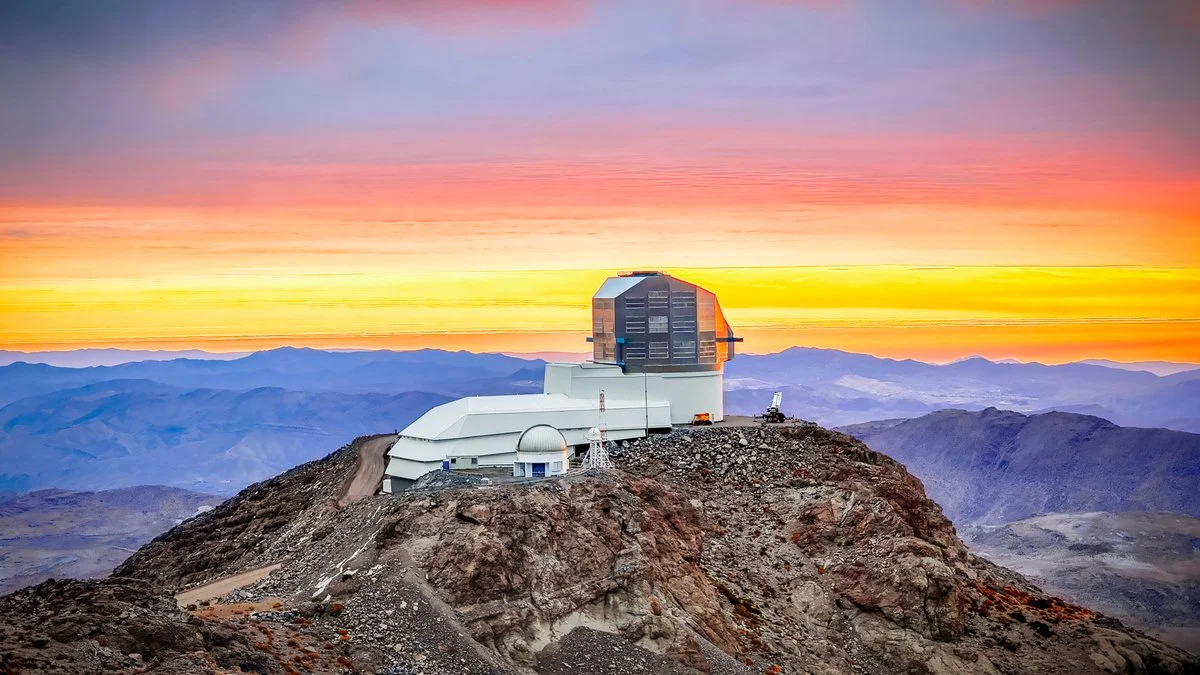The James Webb Space Telescope has mesmerised us with its amazing images of deep space. But now a new observatory is making headlines, offering a very different way of looking at the universe. The Vera C. Rubin Observatory, located in Chile, has released its first test images—and they are truly stunning. In just 10 hours of initial monitoring, the ground-based telescope recorded glimpses of more than 10 million galaxies, thousands of asteroids, and many cosmic mysteries never seen before.
The Rubin Observatory is not just another telescope; it represents an entirely new way of looking at the universe. The observatory is located at Cerro Pachón in the Chilean Andes Mountains and houses a giant 8.4-meter telescope. It houses the largest digital camera ever built—a massive 3.2 gigapixel device. This camera can scan the night sky so quickly that changes in the universe can be observed almost in real-time.
A New Era of Sky-Watching Begins
The new observatory is the result of nearly 20 years of hard work and collaboration between two major US scientific institutions—the National Science Foundation and the Department of Energy—and is the main goal of a special 10-year mission called the Legacy Survey of Space and Time (LSST). Under this mission, the Rubin Observatory will take thousands of images every night and scan the entire southern sky every few days. This will allow scientists to better see and understand fast-moving space objects, sudden events, and rare cosmic changes.
The Rubin Observatory has produced astonishing results in its initial testing. In just 10 hours, it discovered 2,104 asteroids that had never been seen before, seven of which are going to pass near Earth—though they pose no threat to us. In addition, the observatory also took a beautiful composite image of the Trifid and Lagoon nebulae, which was created by combining 678 separate photos. One video released by the observatory shows a wide zoom-out that reveals around 10 million galaxies, and this is just a fraction of the total 20 billion galaxies Rubin is expected to observe during its mission.
Rubin vs. Webb: Two Telescopes, Two Missions
Comparisons with the James Webb Space Telescope are inevitable, but we need to know that the two telescopes are built for different purposes. The Webb telescope’s purpose is to look at very old and distant parts of the universe. It works in infrared light and gives us extremely clear pictures of the universe’s beginning. In comparison, the Rubin Observatory is like a giant time-lapse camera, monitoring the sky every night to find out how the universe is changing over time. Here is a professional comparison to help clarify their differences:
| Feature | Vera C. Rubin Observatory | James Webb Space Telescope |
|---|---|---|
| Location | Ground-based (Cerro Pachón, Chile) | Space-based (Lagrange Point L2) |
| Primary Purpose | Wide-field sky monitoring and motion tracking | Deep space imaging and spectroscopy |
| Observation Style | Captures thousands of images nightly | Focuses deeply on targeted regions |
| Wavelength Range | Visible to near-infrared | Infrared spectrum |
| Main Strength | Tracking change over time (time-domain astronomy) | Probing early universe, exoplanets, and galaxy formation |
Together, Rubin and Webb complement each other. While Webb zooms in to capture the details of the early universe and distant exoplanets, Rubin surveys the entire sky to monitor what is changing, moving, or exploding. If Rubin finds something unusual, such as a fast-moving asteroid or an unexpected burst of light, astronomers can then use Webb or other telescopes to study it in detail.
The observatory is dedicated to the great American astronomer Vera C. Rubin, who provided the first solid evidence of the existence of dark matter. The Rubin Observatory’s main goal is to understand mysteries like dark matter and dark energy—which together make up about 95% of the universe but are still unsolved by science today.
Soon Rubin will begin its flagship project, the LSST (Legacy Survey of Space and Time). Once operational, the observatory will produce a huge amount of data, more than any optical observatory has ever produced. This information will not be limited to scientists alone, but will also be available to the general public, teachers and astronomy enthusiasts.
Scipuz’s Take
The Vera C. Rubin Observatory is offering a new way to understand the universe. Its goal is not to see the farthest distance ever but to capture the changes in the universe in real time. The observatory is a medium for students, scientists, and space enthusiasts to see the changing picture of the universe. Now that both Rubin and James Webb are active, the future of space exploration has become even more exciting.
